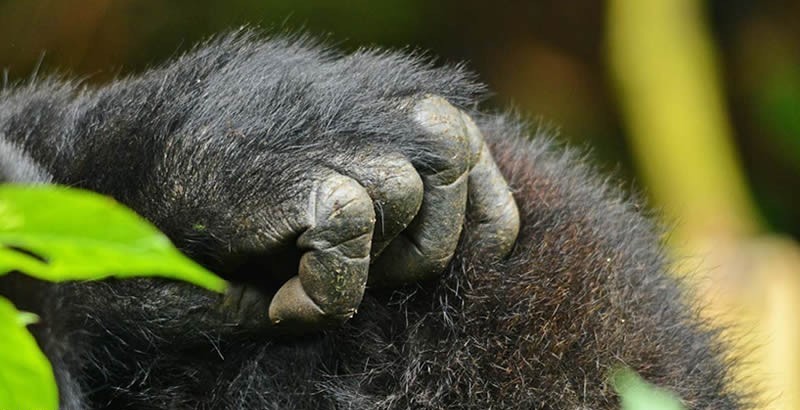Gorilla Reproduction Cycle is quite fascinating. Like humans, gorillas reproduce slowly, giving birth to only one baby at a time and then raising that infant for several years before giving birth again. This slow reproduction rate makes gorillas especially vulnerable to any population declines.
 Wild female gorillas give birth about once every four years; there is no fixed breeding season. The gestation period is about eight and a half months, and births are usually single, though twins occur on rare occasions.
Wild female gorillas give birth about once every four years; there is no fixed breeding season. The gestation period is about eight and a half months, and births are usually single, though twins occur on rare occasions.
A newborn gorilla weighs only about 2 kg and is utterly helpless for the first three months of life, during which it is carried in its mother’s arms.
The young gorilla sleeps in the mother’s nest at night and rides on her back during the day. Female gorillas begin to reach reproductive maturity at about 10 years of age and then transfer to another group or to a lone silverback.
Males reach sexual maturity at about age 9, but they do not reproduce until they become more physically mature silverbacks at about 12–15 years of age.
Most male gorillas leave the group in which they were born and try to gather females to form their own family group. This may involve some aggression, since a young male may invade an established group and try to “kidnap” females, sometimes killing infants in the process.
Occasionally a male will stay in his birth group and become its second silverback, breeding with some of the females and ultimately taking over its leadership when his father ages or dies.
A female’s first ovulatory cycle occurs when she is six years of age, and is followed by a two-year period of adolescent infertility.
The estrous cycle lasts 30–33 days, with outward ovulation signs subtle compared to those of chimpanzees. The gestation period lasts 8.5 months. Female Mountain gorillas first give birth at 10 years of age and have four-year inter birth intervals. Males can be fertile before reaching adulthood. Gorillas mate year round.
Females will purse their lips and slowly approach a male while making eye contact. This serves to urge the male to mount her.
If the male does not respond, then she will try to attract his attention by reaching towards him or slapping the ground. In multiple-male groups, solicitation indicates female preference, but females can be forced to mate with multiple males.
Males incite copulation by approaching a female and displaying at her or touching her and giving a “train grunt”. Recently, gorillas have been observed engaging in face-to-face sex, a trait once considered unique to humans and bonobos.
Gorilla infants are vulnerable and dependent, thus mothers, their primary caregivers, are important to their survival. Male gorillas are not active in caring for the young, but they do play a role in socializing them to other youngsters.
The silverback has a largely supportive relationship with the infants in his troop and shields them from aggression within the group. Infants remain in contact with their mothers for the first five months and mothers stay near the silverback for protection.
Infants suckle at least once per hour and sleep with their mothers in the same nest. This another fascinating thing about Gorilla Reproduction Cycle.
Infants begin to break contact with their mothers after five months, but only for a brief period each time. By 12 months old, infants move up to five meters (16 feet) from their mothers. At around 18–21 months, the distance between mother and offspring increases and they regularly spend time away from each other.
In addition, nursing decreases to once every two hours.
Infants spend only half of their time with their mothers by 30 months. They enter their juvenile period at their third year, and this lasts until their sixth year.
At this time, gorillas are weaned and they sleep in a separate nest from their mothers. After their offspring are weaned, females begin to ovulate and soon become pregnant again.
The presence of play partners, including the silverback, minimizes conflicts in weaning between mother and offspring
The life expectancy of wild gorillas is about 35 and 40 years, though captive gorillas have lived into their 50s, a female western gorilla at the Columbus Zoo and Aquarium was the oldest known gorilla, at 60 years of age when she died on January 17, 2017.
On your gorilla safari, you will quite range of ages among gorilla; of course, you will be able to see the silverback itself.
Contact us to know more about Gorilla Reproduction Cycle and parenting.
